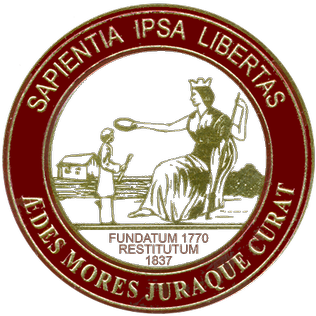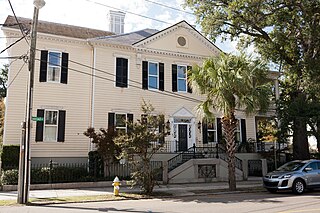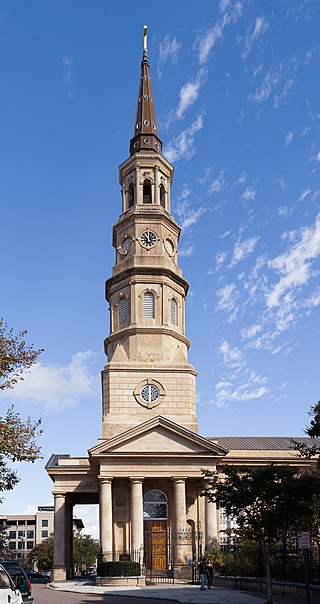
Edward Rutledge was an American Founding Father and politician who signed the Continental Association and was the youngest signatory of the Declaration of Independence. He later served as the 39th governor of South Carolina.

Thomas Heyward Jr. was an American Founding Father, lawyer, jurist, and politician. Heyward was active politically during the Revolutionary Era. As a member of the Continental Congress representing South Carolina, he signed the Declaration of Independence and Articles of Confederation. Heyward's imprisonment in Florida by the British for nearly a year and the loss of a considerable number of slaves led to his being proclaimed a martyr of the revolution.

Thomas Lynch Jr. was a signer of the United States Declaration of Independence as a representative of South Carolina and a Founding Father of the United States. His father was a member of the Continental Congress who had signed the 1774 Continental Association, and when he stepped down because of illness Lynch Jr. was selected to fill his post.

The College of Charleston is a public university in Charleston, South Carolina. Founded in 1770 and chartered in 1785, it is the oldest university in South Carolina, the thirteenth oldest institution of higher learning in the United States, and the oldest municipal college in the country. The founders of the institution included three future signers of the Declaration of Independence, and three future signers of the United States Constitution.

Old Salem is a historic district of Winston-Salem, North Carolina, United States, which was originally settled by the Moravian community in 1766. It features a living-history museum which interprets the restored Moravian community. The non-profit organization began its work in 1950, although some private residents had restored buildings earlier. As the Old Salem Historic District, it was declared a National Historic Landmark (NHL) in 1966, and expanded in 2016. The district showcases the culture of the Moravian settlement in North Carolina during the 18th and 19th centuries, communal buildings, churches, houses and shops.

The French Quarter is a historic district and a section of downtown Charleston, South Carolina, United States, that is listed on the National Register of Historic Places.

The Charleston Museum is a museum located in the Wraggborough neighborhood in Charleston, South Carolina. It is the oldest museum in the United States. Its highly regarded collection includes historic artifacts, natural history, decorative arts and two historic Charleston houses. It replaces the Old Charleston Museum that burned down due to unknown causes.

The Matthew Thornton House is a historic house and National Historic Landmark in Derry, New Hampshire. It was from 1740 to 1779 the home of Matthew Thornton, a Founding Father and signer of the U.S. Declaration of Independence.

Summerseat, also known as the George Clymer House and Thomas Barclay House, is a historic house museum at Hillcrest and Legion Avenues in Morrisville, Bucks County, Pennsylvania. Built about 1770, it is the only house known to have been owned by two signers of the United States Declaration of Independence, Founding Fathers George Clymer and Robert Morris, and as a headquarters of General George Washington during the American Revolutionary War. The house is now managed by the Morrisville Historical Society, which offers tours. It was designated a National Historic Landmark in 1965.

The Dubose Heyward House is a historic house at 76 Church Street in Charleston, South Carolina. Now a wing of a larger house, this modest two-story structure was the home from 1919 to 1924 of author Dubose Heyward (1885–1940), author of Porgy, one of the first works to portray Southern African-Americans in a positive light. The house was declared a National Historic Landmark in 1971.

Hopsewee Plantation, also known as the Thomas Lynch, Jr., Birthplace or Hopsewee-on-the-Santee, is a plantation house built in 1735 near Georgetown, South Carolina. It was the birthplace of Thomas Lynch, Jr., a Founding Father who was a signer of the Declaration of Independence, and served as a Lowcountry rice plantation. Before he departed for his ill-fated voyage he made a will, which stipulated that heirs of his female relatives must change their surname to Lynch in order to inherit the family estate, a rice plantation. He was taken ill at the end of 1779 and he sailed, with his wife, for St. Eustatius in the West Indies. Their ship disappeared at sea in a storm and was never found. The family estate, Hopsewee, still stands in South Carolina. The Lynch family sold the house in 1752 to Robert Hume whose son, John Hume, lived at Hopsewee in the winter after inheriting it. Upon his death in 1841, his own son, John Hume Lucas, inherited the house. John Hume Lucas died in 1853. Like many Santee plantations, it was abandoned during the Civil War. After the war, rice was never planted again, but the Lucas family continued to occupy Hopsewee until 1925. In September 1949, Col. and Mrs. Wilkinson bought the house and occupied it.

The Huguenot Church, also called the French Huguenot Church or the French Protestant Church, is a Gothic Revival church located at 136 Church Street in Charleston, South Carolina. Built in 1844 and designed by architect Edward Brickell White, it is the oldest Gothic Revival church in South Carolina, and has been designated a National Historic Landmark and listed on the National Register of Historic Places. The congregation it serves traces its origins to the 1680s, and is the only independent Huguenot church in the United States.
St. Michael's AnglicanChurch is a historic church and the oldest surviving religious structure in Charleston, South Carolina. It is located at Broad and Meeting streets on one of the Four Corners of Law, and represents ecclesiastical law. It was built in the 1750s by order of the South Carolina Assembly. It is listed on the National Register of Historic Places and is a National Historic Landmark.

The Colonel John Stuart House is a historic house at 104-106 Tradd Street in Charleston, South Carolina. Built in 1772, four years before the American Revolution, it is the city's oldest known example of a side-hall plan house. It is nationally significant as the home of Colonel John Stuart, who was the King's Superintendent of Indian Affairs in the South. He improved relations with the Five Civilized Tribes, especially the Cherokee Nation between the Seven Years' War and the American Revolutionary War. It was declared a National Historic Landmark in 1973.

The Edward Rutledge House, also known as the Carter-May House and now The Governor's House Inn, is a historic house at 117 Broad Street in Charleston, South Carolina. This 18th-century house was the home of Founding Father Edward Rutledge (1749–1800), a signer of the United States Declaration of Independence and later Governor of South Carolina. Despite many changes to the house, it retains its 18th-century core dating to about 1760, and was declared a National Historic Landmark in 1971.

Gabriel Manigault was an American architect.

St. Philip's Church is an historic church at 142 Church Street in Charleston, South Carolina. Its National Historic Landmark description states: "Built in 1836, this stuccoed brick church features an imposing tower designed in the Wren-Gibbs tradition. Three Tuscan pedimented porticoes contribute to this design to make a building of the highest quality and sophistication." On November 7, 1973, it was added to the National Register of Historic Places and designated a National Historic Landmark.

The Charlotte Forten Grimké House is a historic house at 1608 R Street NW in the Dupont Circle neighborhood of Northwest Washington, D.C., United States. From 1881 to 1886, the house was home to Charlotte Forten Grimké (1837–1914), an African-American abolitionist and educator, one of the first Northerners to enter Union-controlled areas of the South during the American Civil War in order to teach freedmen and their children. The house was designated a National Historic Landmark in 1976.

Old House Plantation, also known as Daniel Heyward Plantation, is a historic plantation site and grave located near Ridgeland, Jasper County, South Carolina. The plantation was first settled in 1743 and was likely active through the first quarter of the 19th century. It was the birthplace and burial site of Founding Father Thomas Heyward, Jr., one of South Carolina's four signers of the Declaration of Independence. The plantation site includes a variety of plantation structures including the main house, two probable flanking outbuildings, a tidal mill, stable and likely slave quarters. The original 500-acre plantation grew to 16,000 acres, but it was destroyed by fire in 1865. Associated with the plantation is the Heyward family cemetery and surrounding brick wall.






















